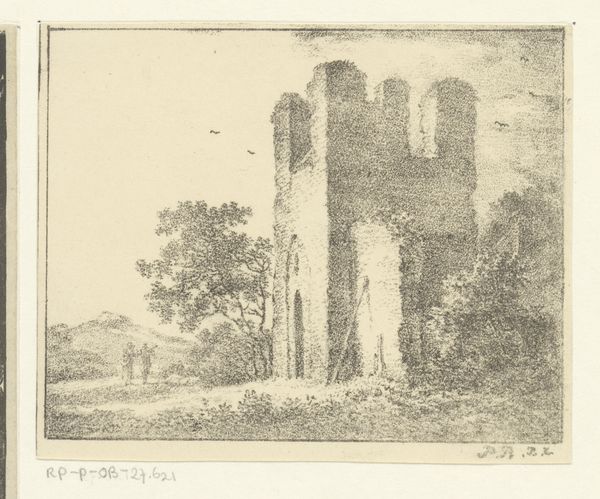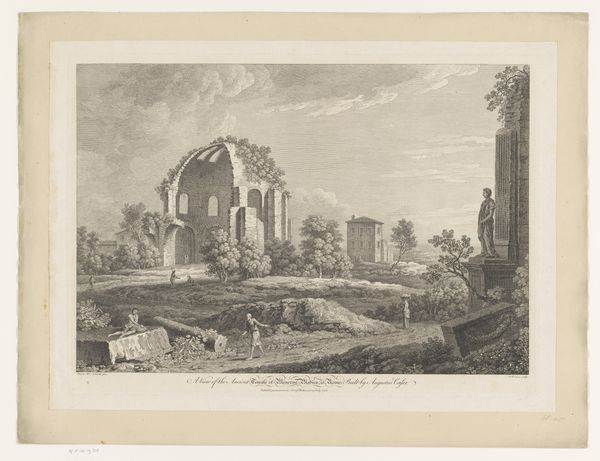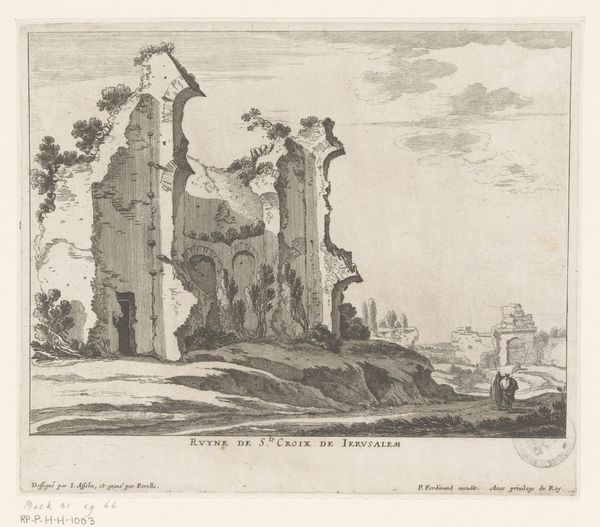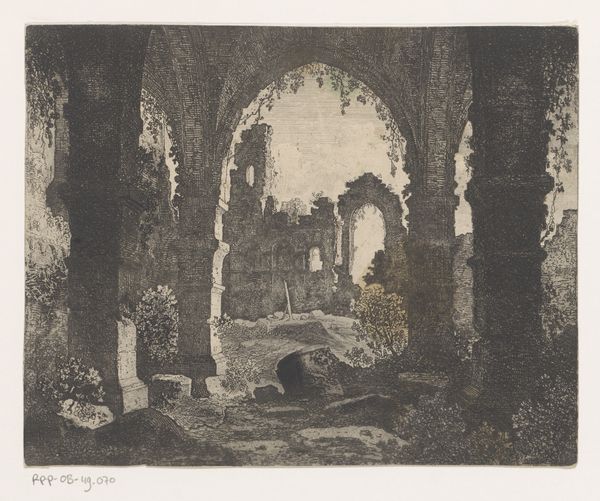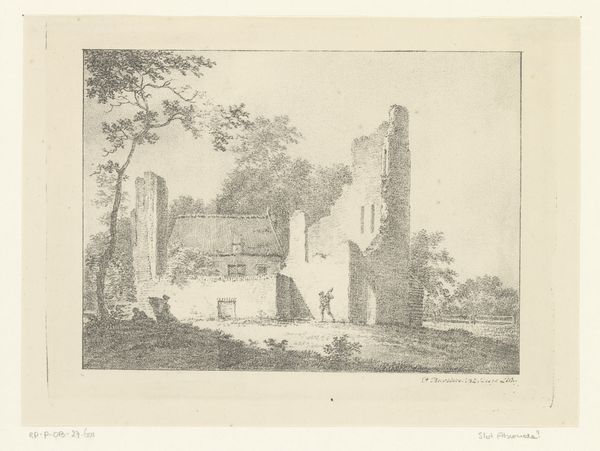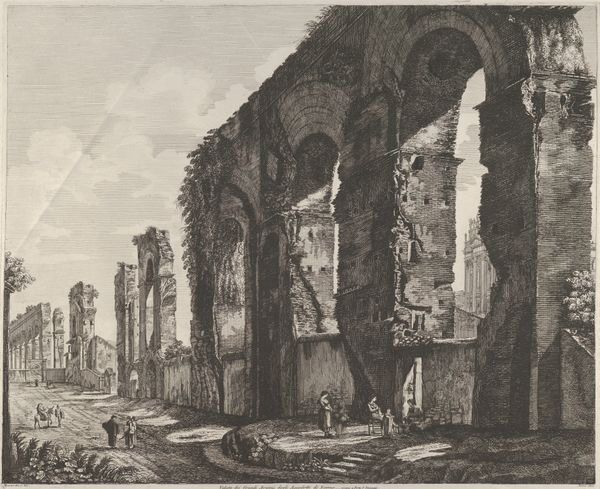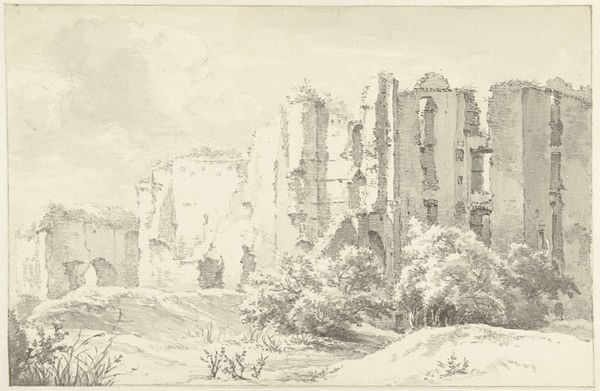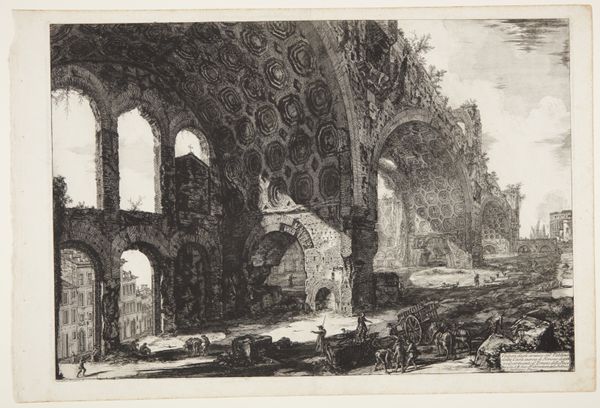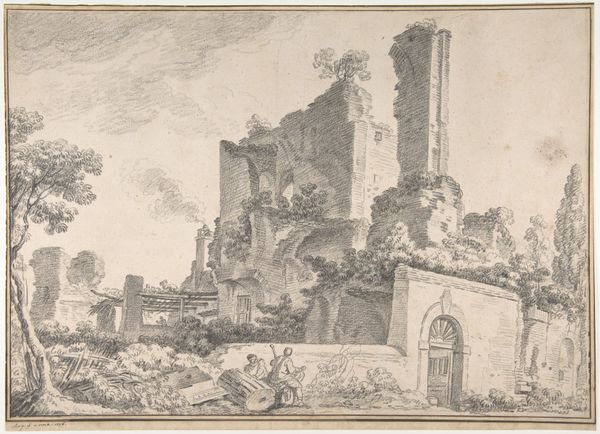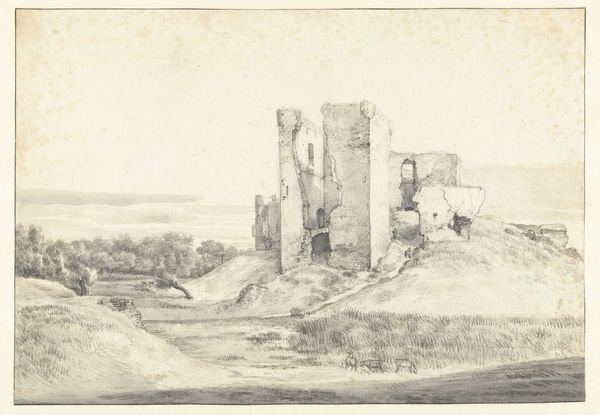
drawing, pencil
#
pencil drawn
#
drawing
#
light pencil work
#
pencil sketch
#
old engraving style
#
landscape
#
figuration
#
romanticism
#
pencil
#
pencil work
#
history-painting
Dimensions: height 180 mm, width 235 mm
Copyright: Rijks Museum: Open Domain
Editor: This is "Landschap met ruïne en figuren," or Landscape with Ruins and Figures, by Pieter Barbiers, dating roughly from 1809 to 1837. It's a pencil drawing, and the delicate linework gives it such a feeling of fragility, of something slowly fading away. What strikes you when you look at it? Curator: I see the artist’s acute attention to the production of the image. Consider the pencil itself—its manufacturing process, its cost, its accessibility to different social classes during the early 19th century. Was Barbiers using a readily available tool, or did his access reflect a certain level of privilege linked to the depicted ruins, potentially representing decayed aristocracy? Editor: That's a fascinating way to look at it. I was mostly thinking about the ruined castle as a symbol of lost glory. Curator: And what does the means of reproducing this lost glory tell us? This is not painting in oils; this is a pencil sketch. The lightness of the medium could be read as reflecting not just a romantic aesthetic but also a certain kind of economic and social positioning in relation to the grand historical narratives suggested by the ruined architecture. What was the labor involved compared to painting, and what might this say? Editor: So you're saying the choice of pencil, the relative ease and affordability of drawing compared to painting, perhaps speaks to a shift in how artists engaged with, or even democratized, grand historical themes? Curator: Precisely. Think about the paper too – its production, its value. Everything contributes to the narrative. What is lasting here? The paper? The graphite? The lost aristocratic grandeur? Editor: I hadn’t considered all the material implications, only the historical symbolism of the ruins. Curator: Seeing art this way opens up so much about class, labour and society reflected within. I find that incredibly rewarding.
Comments
No comments
Be the first to comment and join the conversation on the ultimate creative platform.
